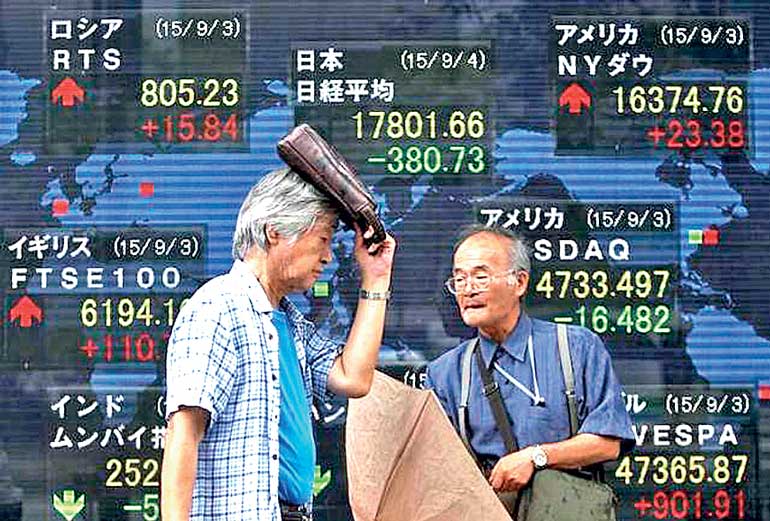Saturday Dec 13, 2025
Saturday Dec 13, 2025
Wednesday, 4 November 2015 00:00 - - {{hitsCtrl.values.hits}}

Reuters: Asian stocks rose on Tuesday helped by buoyant US markets and recent data that indicated the global economy may have turned a corner, though wary central banks signalled a recovery may be anything but durable.
European stocks are set to open higher with spreadbetters expecting Britain’s FTSE 100 to open up 0.4%, Germany’s DAX was seen 0.2% higher, and France’s CAC 40 up 0.3%.
MSCI’s broadest index of Asia-Pacific shares outside Japan broke a five-day losing streak, rising 1.4%. While it has gained more than 11% since the end of September, it is still down more than 10% this year.
Recent gains in Asian stocks have been established on growing hopes that US interest rates aren’t likely to rise as quickly as previously thought, and on a growing sense of relief over China’s growth numbers as evident from recent official data.
But there as signs of a potential headwind for Asia in the coming months as those factors show the two powerful global engines for world growth, namely the US and China, are sputtering, likely hurting the export-led economies in the region.
Global manufacturing growth accelerated to a seven-month high in October but remained muted despite factories cutting their prices at the steepest rate since May 2013, a business survey showed on Monday.
Frederic Neumann, co-head of Asian economics at HSBC, suspects much of the improvement may be temporary, reflecting the lift from new electronics products, as manufacturers are still cutting jobs or slowing hiring, especially in China, India and South Korea.
That was evident in plenty on Tuesday with a cautious Reserve Bank of Australia holding rates but keeping the option open for further policy easing while price action largely kept within well-trod ranges, especially with Japan out on a holiday.
“They’ve obviously left the door open to cut rates but something needs to happen to get that rate cut over the line,” said Michael Blythe, chief economist at CBA, referring to the Reserve Bank of Australia’s latest rate vote.
Corporate earnings growth expectations also painted a wary picture with 12-month forecasts for the constituents of the MSCI World, S&P500, Europe and Asian stocks holding near five-year lows.
Within Asia, Jakarta and Hong Kong led the region higher. In China, the CSI300 index of the largest listed companies in Shanghai and Shenzhen was flat.
Wall Street had a good outing with major indexes in the black led by Nasdaq which rose 1.45% to its highest close since 2000. Futures pointed to a brisk start.
In contrast, government bonds were pressured by improving economic data in Europe and comments from European Central Bank officials that cast doubt on the need for more stimulus.
Governing Council member Ewald Nowotny said the ECB was right to consider stepping up its bond buying to boost inflation but had to think very carefully before doing so.
That pushed up yields across the euro zone while yields on US 10-year Treasuries reached their highest in five weeks at 2.189%.
Activity was much lighter in currencies where investors are awaiting clarity on whether the Federal Reserve will start hiking rates in December.
The dollar index was barely changed at 96.866 after drifting between 96.635 and 96.965. The euro was hemmed in a tight $ 1.1000-$ 1.1053 range and last stood at $ 1.1080.
Against the yen, the greenback was equally restrained at 120.64. The Australian dollar rose to one-week highs as investors began pricing out a December rate cut.
In commodities, oil has been weighed by the prospect of weak Chinese demand and record-high Russian production.
Brent was slightly firmer at $ 48.86 a barrel, while US crude rose 0.4% to $ 46.29 a barrel.